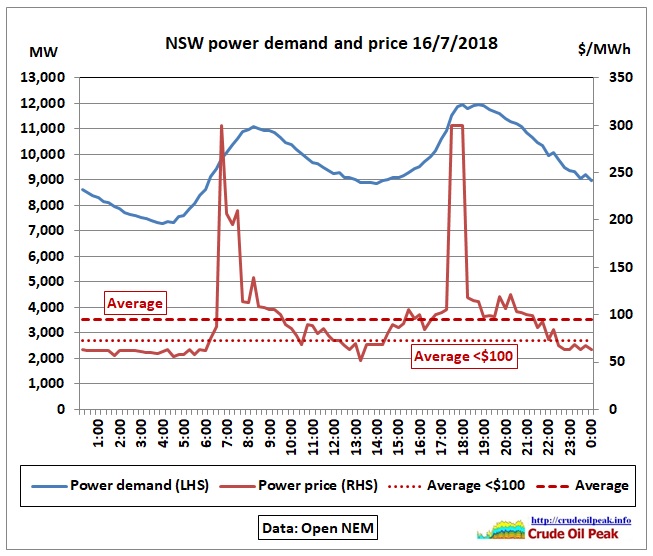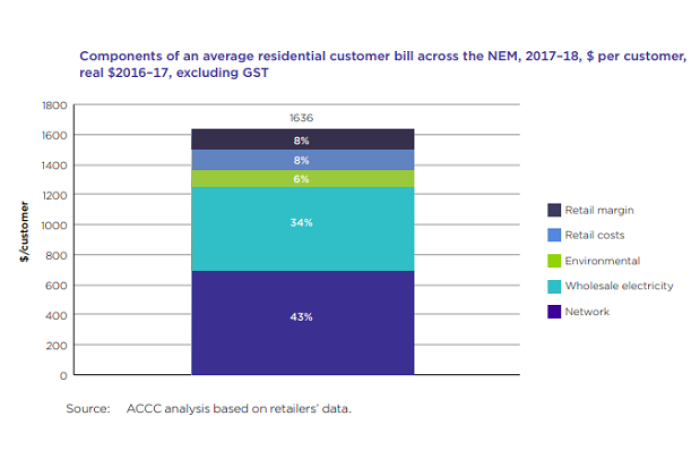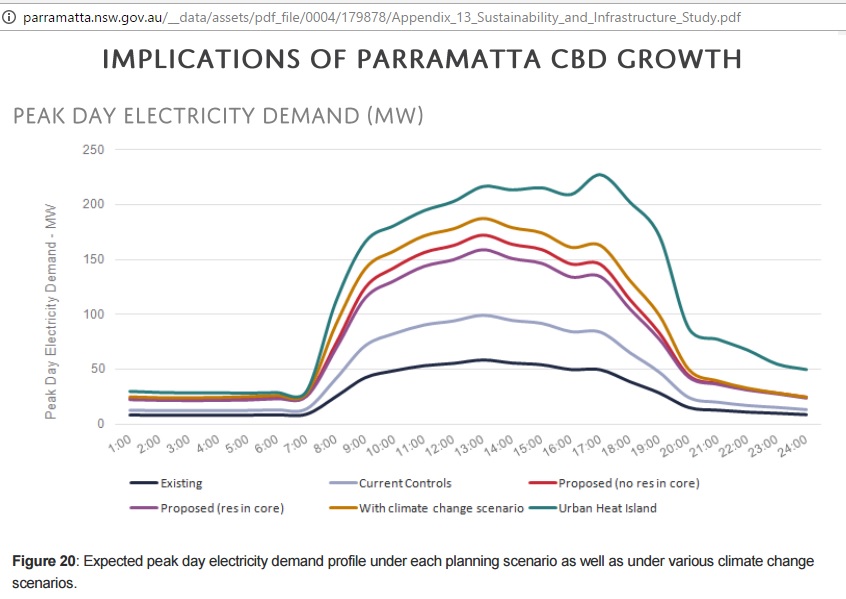 Finally we have an article from a respected academic institution that highlights the prohibitive costs of going renewable with Li-ion battery storage backup. This article has received minimal publicity on the web, so here we give it a little more by making it our feature story. Then on to OPEC; the oil tanker crisis; Kuwait fracks in Canada; Azerbaijan gas; Rio Tinto exits coal; Russia fuels its offshore nuclear plant; Moorside nuclear in doubt; blackouts in South Africa; Australia’s National Energy Guarantee; peaking plants in Europe; an “alarming collapse” in UK renewable investment; 5,000 UK churches go renewable and how heatwaves increase deaths in UK but decrease them in Spain.
Finally we have an article from a respected academic institution that highlights the prohibitive costs of going renewable with Li-ion battery storage backup. This article has received minimal publicity on the web, so here we give it a little more by making it our feature story. Then on to OPEC; the oil tanker crisis; Kuwait fracks in Canada; Azerbaijan gas; Rio Tinto exits coal; Russia fuels its offshore nuclear plant; Moorside nuclear in doubt; blackouts in South Africa; Australia’s National Energy Guarantee; peaking plants in Europe; an “alarming collapse” in UK renewable investment; 5,000 UK churches go renewable and how heatwaves increase deaths in UK but decrease them in Spain.
MIT Technology Review: The $2.5 trillion reason we can’t rely on batteries to clean up the grid
The Clean Air Task Force recently found that reaching the 80 percent mark for renewables in California would mean massive amounts of surplus generation during the summer months, requiring 9.6 million megawatt-hours of energy storage. Achieving 100 percent would require 36.3 million. The state currently has 150,000 megawatt-hours of energy storage in total, mainly pumped hydroelectric storage with a small share of batteries.
Building the level of renewable generation and storage necessary to reach the state’s goals would drive up costs exponentially, from $49 per megawatt-hour of generation at 50 percent to $1,612 at 100 percent. And that’s assuming lithium-ion batteries will cost roughly a third what they do now. Similarly, a study earlier this year in Energy & Environmental Science found that meeting 80 percent of US electricity demand with wind and solar would require either a nationwide high-speed transmission system, which can balance renewable generation over hundreds of miles, or 12 hours of electricity storage for the whole system. At current prices, a battery storage system of that size would cost more than $2.5 trillion.
…click on the above link to read the rest of the article…



 Fig 1: NSW power demand vs wholesale electricity prices
Fig 1: NSW power demand vs wholesale electricity prices
 Fig 3: Polyhorizon, “First highrise opens” Northern District Times 13 June 2018
Fig 3: Polyhorizon, “First highrise opens” Northern District Times 13 June 2018 Fig 4: Peak demand of skyscrapers
Fig 4: Peak demand of skyscrapers





 BP and the International Energy Agency (IEA) measure the contribution of renewables to the global energy mix in terms of primary energy consumed while the World Bank estimates it in terms of final energy consumed. All three give different results, with BP estimating a total renewables contribution of 9.5% in 2015 compared to IEA’s 13.7% and the World Bank’s 18.1%. The BP/IEA differences become larger when contributions are segregated by source (BP estimates almost three times as much energy from hydro as as IEA and IEA estimates four times as much energy from “other renewables” as BP). This post documents these discrepancies while making no attempt to say who is right and who is wrong – that would have to be the subject of another post. But it does raise the question of whether we really know how large a contribution renewables are making to the world’s energy mix.
BP and the International Energy Agency (IEA) measure the contribution of renewables to the global energy mix in terms of primary energy consumed while the World Bank estimates it in terms of final energy consumed. All three give different results, with BP estimating a total renewables contribution of 9.5% in 2015 compared to IEA’s 13.7% and the World Bank’s 18.1%. The BP/IEA differences become larger when contributions are segregated by source (BP estimates almost three times as much energy from hydro as as IEA and IEA estimates four times as much energy from “other renewables” as BP). This post documents these discrepancies while making no attempt to say who is right and who is wrong – that would have to be the subject of another post. But it does raise the question of whether we really know how large a contribution renewables are making to the world’s energy mix. Like a number of other remote island communities, The Cook Islands have decided to get rid of expensive diesel power and go to 100% solar within the next few years. To do this they are constructing solar arrays backed up with small amounts of Li-ion battery storage which they believe will overcome the solar intermittency problem. Once again, however, the planners have failed to recognize the prohibitive amounts of battery storage that will be required, and their plans are doomed to fail as a result. The only approach that has any chance of succeeding is to minimize storage requirements by installing far more solar capacity than is needed to meet demand (“overgeneration”), but this approach has problems of its own. (Inset- Rarotonga, the largest and most populous of the Cook Islands).
Like a number of other remote island communities, The Cook Islands have decided to get rid of expensive diesel power and go to 100% solar within the next few years. To do this they are constructing solar arrays backed up with small amounts of Li-ion battery storage which they believe will overcome the solar intermittency problem. Once again, however, the planners have failed to recognize the prohibitive amounts of battery storage that will be required, and their plans are doomed to fail as a result. The only approach that has any chance of succeeding is to minimize storage requirements by installing far more solar capacity than is needed to meet demand (“overgeneration”), but this approach has problems of its own. (Inset- Rarotonga, the largest and most populous of the Cook Islands).
 Recent renewable energy auctions in a number of countries have been won by record low solar and wind bids – proof, according to some media sources, that wind and solar are already cheaper than fossil fuels. This post addresses the question of whether these low bids are realistic and concludes that they probably aren’t. But a detailed assessment of why they aren’t – and why wind and solar auction bids vary so much from country to country – is beyond the scope of a single blog post. Correspondents who can supply country-specific details on these questions are encouraged to provide them.
Recent renewable energy auctions in a number of countries have been won by record low solar and wind bids – proof, according to some media sources, that wind and solar are already cheaper than fossil fuels. This post addresses the question of whether these low bids are realistic and concludes that they probably aren’t. But a detailed assessment of why they aren’t – and why wind and solar auction bids vary so much from country to country – is beyond the scope of a single blog post. Correspondents who can supply country-specific details on these questions are encouraged to provide them.


Have investors lost interest in “clean energy”?
A year ago, using data from Bloomberg New Energy Finance (BNEF), I put up a post discussing global “clean energy” investment between 1Q 2005 and 2Q 2017. BNEF has now published a new report adding a year of data through 2Q 2018 along with some more detailed graphics. This post reproduces some of the more interesting ones, with an emphasis on Europe.
First we will deal with the question of the inadequacy of clean energy funding. According to the BP Statistical Review global electricity demand in 2017 was 621 TWh higher than in 2016, an increase of 2.5%. Table 1 shows how this added demand was filled:
*Wind, solar, geothermal, biomass, waste, biofuels etc.
To decarbonize the world’s electricity sector and to meet emissions targets enough renewable generation must be added each year a) to cover increased global demand and b) to replace a significant amount of fossil fuel generation. Table 1, however, shows that the 307 TWh of renewable generation added in 2017 was enough to fill only about half of the increase in global demand.
…click on the above link to read the rest of the article…